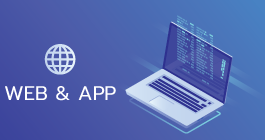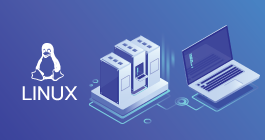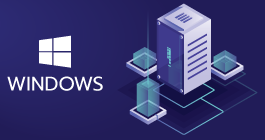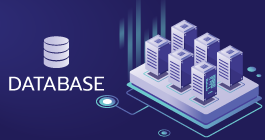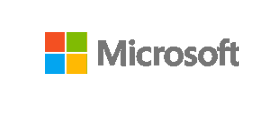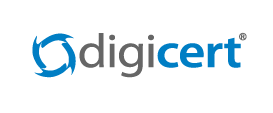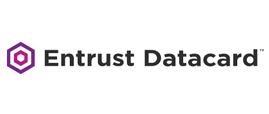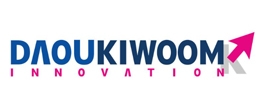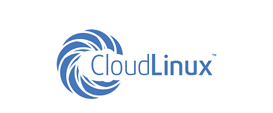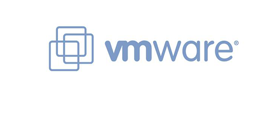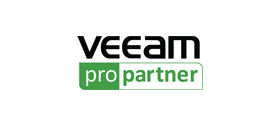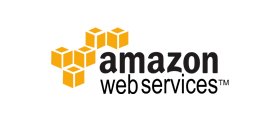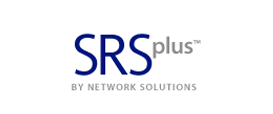-
Welcome to My Website
This is a text box. Write your own content here. This is an excellent place for you to add a paragraph.
Netway Support Center
เราพร้อมบริการคุณ ตลอด 24 ชั่วโมง
Payment & Invoices
Products Knowledge










Zendesk




Other Cloud Products
Technical Knowledge
Website/Install Application & FTP
Linux Technical Knowledge
Windows Technical Knowledge
Database
Blog list (8)
อีเมลฟิชชิ่ง (Phishing) โดยใช้ไฟล์แนบ SVG
ภัยคุกคามจาก Hacker อีเมลฟิชชิ่ง (Phishing) โดยการส่งอีเมลแนบไฟล์ SVG การพัฒนาซอฟต์แวร์ที่เปลี่ยนไปอย่างรวดเร็วก็แฝงด้วยอันตรายจากภัยคุกคามโดยกลุ่มผู้ไม่หวังดี ที่คอยเปลี่ยนรูปแบบการก่อกวนในลักษณะต่างๆ ไม่เว้นแม้แต่รูปกราฟฟิกแนวใหม่อย่าง SVG SVG หรือ Scalable Vector Graphics แสดงผลทางเว็บไซต์ออนไลน์เป็นรูปภาพแตกต่างจากพวกรูปภาพไฟล์ .PNG, .JPG ที่ใช้ลักษณะพิกเซลรูปภาพ SVG จะถูกสร้างขึ้นลักษณะเส้น รูปร่าง โดยใช้สูตรทางคณิตศาสตร์และซอร์ส โค้ด (Source Code) ที่เป็นภาษาคอมพิวเตอร์แสดงผลออกมาเป็นภาพกราฟฟิกซึ่งจะมีความละเอียดคมชัดมากกว่า การย่อขยายไม่ผิดเพี้ยนยังคงรักษาความละเอียดสูง ตัวอย่าง: รูปภาพไฟล์นามสุกล .SVG หากเราเข้ามาดูไฟล์ในโปรแกรม Visual Studio Code - Code Editing จะเห็นโค้ดลักษณะนี้ อีเมลแนบไฟล์ SVG อันตรายอย่างไร ผู้ก่อภัยคุกคามหันมาใช้ไฟล์ SVG มากขึ้น การใช้แนบไฟล์ SVG ในการฟิชชิ่ง เป็นวิธีในการซ่อนสคริปต์ที่เป็นอันตรายและตรวจจับได้ยาก เนื่องจากไม่เพียงแต่ช่วยให้แสดงภาพกราฟิกได้ แต่ยังใช้แสดง HTML เป็นองค์ประกอบและเรียกใช้ JavaScript ที่ฝั่งซอร์สโค้ดไว้เพื่อเปลี่ยนเส้นทางเบราว์เซอร์ไปยังเว็บไซต์ของโฮสต์แบบฟอร์มฟิชชิ่งอัตโนมัติ โดยสร้างเลียนแบบหน้าจอ Excel และช่องใส่รหัสผ่านของ Microsoft Account เพื่อเปิดไฟล์และขโมยข้อมูลสำคัญของผู้ที่กรอกข้อมูลลงไป ตัวอย่างจาก BleepingComputer ไฟล์แนบ SVG จะแสดงสเปรดชีต Excel ปลอมแปลงแบบฟอร์มการเข้าสู่ระบบเพื่อส่งข้อมูลของเราไปยังผู้ที่ก่อให้เกิดภัยคุกคาม แหล่งที่มาของภาพ: BleepingComputer ปัญหาคือ เนื่องจากไฟล์เหล่านี้ส่วนใหญ่แสดงเป็นภาพ จึงมักไม่ถูกซอฟต์แวร์ด้านความปลอดภัยตรวจพบนั่นเอง ฉะนั้นเราจึงต้องตรวจสอบการคลิกอ่านข้อมูลก่อน หากมีไฟล์ SVG แนบมาจากบุคคลหรือหน่วยงานที่เราไม่คุ้นเคยก็ควรระมัดระวังให้มากยิ่งขึ้น Netway Communication ให้บริการด้าน Cloud, Hosting และ IT พื้นฐานสำหรับธุรกิจ เป็นตัวแทนแบรนด์ไอทีชั้นนำมากมาย ทั้ง Microsoft, Google, Digicert, ฯลฯ เรามีเจ้าหน้าที่พร้อมดูแลคุณ 24 ชม. ติดต่อเราเพื่อสอบถามผลิตภัณฑ์ ขอราคา หรือปรึกษาเรื่องไอที ได้เลยค่ะ Line : @netway (มี @ ด้านหน้า) หรือ https://bit.ly/line-netwayFacebook : m.me/netway.offcialTel : 02-055-1095Email : support@netway.co.thWeb Chat : [[URL]]/ ที่มา: BleepingComputer
Windows Server 2025 เปิดตัวแล้ว
Windows Server 2025 เปิดตัวแล้ว Windows Server 2025 ซึ่งเป็นระบบปฏิบัติการเซิร์ฟเวอร์เวอร์ชันล่าสุด ที่มาพร้อม Feature เจ๋งๆ โดยจะเริ่มใช้งานทั่วไปตั้งแต่ วันศุกร์ ที่ 1 พฤศจิกายน เป็นต้นไป Windows Server 2025 มาพร้อมการพัฒนาครั้งสำคัญในด้านต่างๆ เช่น Hyper-V GPU integration Storage Spaces Direct (software defined storage) Software-defined networking Clustering ซึ่งจะส่งเสริมการใช้งาน AI และ GPU ที่สะดวกมากยิ่งขึ้น และที่สำคัญมากๆ ในเรื่องของ Security คือฟีเจอร์ Hotpatching หรือการติดตั้งแพตช์ความปลอดภัยประจำเดือนโดยไม่จำเป็นต้องรีสตาร์ตเครื่องทุกครั้ง ฟีเจอร์นี้มีมาก่อนแล้วใน Windows Server 2022 บน Azure โดยไมโครซอฟท์จะออกแพตช์สำคัญ (baseline) ที่ต้องรีบูตเครื่องไตรมาสละครั้ง ส่วนแพตช์ของเดือนที่เหลือในไตรมาสนั้นๆ จะเป็น hotpatch ที่ไม่ต้องบูตเครื่องใหม่ นอกจากฟีเจอร์ที่โดดเด่นเหล่านี้แล้วยังมีฟีเจอร์อื่นๆ อีกมากเลยทีเดียว ตัวอย่างฟีเจอร์ใหม่ที่น่าสนใจอื่น ๆ ใน Windows Server 2025 NVMe storage performance Block cloning support New Active Directory (AD) functionalities and capabilities Credential Guard File services/server message block (SMB) hardening Delegate Managed Service Accounts (dMSA) Accelerated Networking (AccelNet) DTrace Virtualization-based security (VBS) enclaves Windows Local Administrator Password Solution (LAPS) GPU Partitioning (GPU-P) GPU Live Migration Discrete Device Assignment (DDA) Windows Admin Center (WAC) Hybrid Cloud Integration ท่านสามารถดูรายละเอียดเพิ่มเติมได้ที่ What's new in Windows Server 2025 โดยการอัปเกรดมาเป็น Windows Server 2025 นั้นสามารถดำเนินการอัปเกรดจาก Windows Server 2012 R2 ขึ้นไป Windows Server 2025 จะสิ้นสุดการสนับสนุนในวันที่ 10 ตุลาคม 2029 และสิ้นสุดการสนับสนุนขยายเวลาในอีก 5 ปีต่อมาในวันที่ 10 ตุลาคม 2034 (Windows Server release information) หากท่านใดที่ต้องการทดลองใช้ Windows Server 2025 สามารถใช้รุ่นทดลองใช้งานฟรี 180 วันได้ผ่านทาง Microsoft Evaluation Center สำหรับหน่วยงานที่สนใจสั่งซื้อNetway Communication ให้บริการ Windows Server 2025 แล้ววันนี้ คลิก อ่านรายละเอียดและราคา Windows Server 2025 Netway Communication ให้บริการด้าน Cloud, Hosting และ IT พื้นฐานสำหรับธุรกิจ เป็นตัวแทนแบรนด์ไอทีชั้นนำมากมาย ทั้ง Microsoft, Google, Digicert, ฯลฯ เรามีเจ้าหน้าที่พร้อมดูแลคุณ 24 ชม. ติดต่อเราเพื่อสอบถามผลิตภัณฑ์ ขอราคา หรือปรึกษาเรื่องไอที ได้เลยค่ะ Line : @netway (มี @ ด้านหน้า) หรือ https://bit.ly/line-netwayFacebook : m.me/netway.offcialTel : 02-055-1095Email : support@netway.co.thWeb Chat : [[URL]]/ ที่มา: microsoft, bleepingcomputer.com
วิธีเปลี่ยน Email signature บน Outlook (Microsoft 365)
วิธีเปลี่ยนลายเซ็นอีเมล Email signature บน Outlook (Microsoft 365) Email signature บน Outlook (Microsoft 365) คือ การระบุข้อมูลลายเซ็นในส่วนท้ายข้อความของอีเมล (Email) เพื่อยืนยันการมีตัวตนเพิ่มความน่าเชื่อถือและเป็นข้อมูลที่สามารถติดต่อกลับได้ เช่น คำลงท้ายอีเมล, ชื่อ, ตำแหน่ง, ชื่อบริษัท, เบอร์โทร, อีเมล อื่นๆ อีกทั้งยังสามารถปรับตัวอักษร ขนาด สี ตกแต่งรูปแบบต่างๆ และแทรกรูปขนาดเล็กได้ ตัวอย่าง: การสร้างหรือเปลี่ยนอีเมลลายเซ็นที่ใช้งานบน Outlook Browser เวอร์ชั่น Microsoft 365 Business (ใน Free Email Outlook หรือชื่อเดิม Hotmail.com ใช้วิธีการเดียวกัน) วิธีการใช้งาน ไปที่ https://outlook.office.com/mail/ ของเราเอง คลิกปุ่ม Settings แสดงหน้าต่างดังรูป คลิกเมนู Account เลือก Signatures เปลี่ยนข้อมูล ตามต้องการให้เรียบร้อย คลิกปุ่ม Save การแสดงผล เมื่อสร้างอีเมล จะแสดง Signature ในส่วนท้ายอีเมลดังรูป Netway Communication ให้บริการด้าน Cloud, Hosting และ IT พื้นฐานสำหรับธุรกิจ เป็นตัวแทนแบรนด์ไอทีชั้นนำมากมาย ทั้ง Microsoft, Google, Digicert, ฯลฯ เรามีเจ้าหน้าที่พร้อมดูแลคุณ 24 ชม. ติดต่อเราเพื่อสอบถามผลิตภัณฑ์ ขอราคา หรือปรึกษาเรื่องไอที ได้เลยค่ะ Line : @netway (มี @ ด้านหน้า) หรือ https://bit.ly/line-netwayFacebook : m.me/netway.offcialTel : 02-055-1095Email : support@netway.co.thWeb Chat : [[URL]]/
เทคนิคแคปเจอร์ (Capture) หน้าเว็บไซต์ทั้งหน้าด้วย Chrome Extensions
เทคนิคการแคปเจอร์ (Capture) หน้าจอเว็บไซต์ทั้งหน้าด้วย Extensions จาก Chrome Browser ใน Chrome Browser จาก Google มีเครื่องมือ (Tool) หลายชนิดที่สามารถติดตั้งได้ฟรี อย่าง Chrome Extensions เป็นส่วนเสริมตัวเลือกหนึ่งที่เป็นแหล่งรวมเครื่องมือมากมายที่ใช้สำหรับการท่องเว็บไซต์ออนไลน์และการใช้งานด้านโปรแกรมคอมพิวเตอร์มีความสะดวกมากยิ่งขึ้น แคปเจอร์ (Capture) คือ การคัดลอกหรือการถ่ายภาพหน้าจอเว็บไซต์ให้เป็นไฟล์ภาพนิ่ง ในการทำงานออนไลน์บางครั้งเราจำเป็นต้องแคปเจอร์ (Capture) ข้อมูลของเราบนเว็บไซต์ทั้งหน้าเพื่อใช้งานบางอย่าง เช่น ภาพประกอบในรายงาน (Report), ภาพประกอบคู่มือการใช้งาน, ภาพประกอบการ Backup ข้อมูลหน้าเว็บ หรือนำไปใช้ในงานกราฟฟิกเป็นต้น อีกทั้งบันทึกเป็นไฟล์สกุล .pdf, .jpg, .png และดาวน์โหลดลงมาได้ (การคัดลอกหรือการถ่ายภาพหน้าจอเรียกได้หลายแบบ เช่น Capture, Screenshot, Snapshot, Print Screen) GoFullPage เป็นเครื่องมือการแคปเจอร์ (Capture) หน้าจอเว็บไซต์ทั้งหน้าให้เป็นภาพนิ่ง ที่มีให้ในเมนูเอ็กเท็นชั่น (Extensions) ของเบราว์เซอร์โครม (Chrome Browser) เป็นเครื่องมือที่ใช้งานง่ายโดยไม่ต้องใช้เมาท์เลื่อนสกรอบาร์ (Scroll bar) สามารถแก้ ไขปรับแต่งภาพได้ง่ายๆ เช่น ใส่อักษร, เส้น, ลูกศร, เบลอภาพ, ครอปตัดภาพ (Crop), ใส่กรอบ URL & Browser, วันที่/เวลาที่แคปเจอร์, เลือกตำแหน่งแสดง URL วันที่เวลาด้านบนหรือด้านล่างได้ การติดตั้ง GoFullPage Extensions บน Chrome Browser เปิดเข้าใช้งาน เบราว์เซอร์โครม (Chrome Browser) คลิกปุ่ม จุด 3 จุด (ขวามือ) --> Extensions --> Visit Chrome Web Store ในกล่อง Search พิมพ์คำว่า GoFullPage จะแสดง Extensions "GoFullPage" ขึ้นมา ให้คลิกเลือก --> คลิกปุ่ม Add to Chrome จากนั้น คลิก Add extension ต้องการแสดงไอคอน GoFullPage บนเบราวเซอร์ คลิก ปุ่ม Extensions --> กด Pin การลบไอคอน GoFullPage บน Chrome Browser คลิกขวาที่ไอคอน --> Remove from Chrome กดปุ่ม Remove ยืนยันการลบ วิธีใช้งาน เปิดหน้าเว็บไซต์ที่เราต้องการ เช่น [[URL]]/ จากนั้น กดปุ่ม จะได้ภาพที่ต้องการ Download ลงเครื่อง คลิกปุ่ม Download Image การแก้ไข: คลิกปุ่ม Edit เมนู Shapes: ใส่อักษร, เส้น, ลูกศร, เบลอภาพ, ใส่กรอบ เมนู Formatting: Crop ภาพ, ใส่กรอบ URL & Browser, วันที่/เวลาที่แคปเจอร์, เลือกตำแหน่งแสดง URL วันที่เวลาด้านบนหรือด้านล่างได้ หมายเหตุ: ในการ Edit นี้ใช้งานฟรี 7วัน หากต้องการดาวน์โหลด ต้องล็อกอินเข้าใช้งานที่ Sign up to Export ด้วย Netway Communication ให้บริการด้าน Cloud, Hosting และ IT พื้นฐานสำหรับธุรกิจ เป็นตัวแทนแบรนด์ไอทีชั้นนำมากมาย ทั้ง Microsoft, Google, Digicert, ฯลฯ เรามีเจ้าหน้าที่พร้อมดูแลคุณ 24 ชม. ติดต่อเราเพื่อสอบถามผลิตภัณฑ์ ขอราคา หรือปรึกษาเรื่องไอที ได้เลยค่ะ Line : @netway (มี @ ด้านหน้า) หรือ https://bit.ly/line-netwayFacebook : m.me/netway.offcialTel : 02-055-1095Email : support@netway.co.thWeb Chat : [[URL]]/
การตั้งค่าภาษาใน Microsoft Teams meetings
การตั้งค่าภาษาใน Microsoft Teams meetings เมื่อเปิดใช้งานแถบ Captions Captions คือ คำบรรยายที่แสดงอยู่ด้านล่างของภาพหรือวิดิโอการประชุมรองรับการใช้งานได้หลายภาษา สามารถซ่อน/แสดงได้ โปรแกรมสามารถตรวจจับสิ่งที่ผู้บรรยายกำลังพูดในที่ประชุมและแสดงคำบรรยายแบบเรียลไทม์ได้ ข้อแนะนำควรใช้แอปเดสก์ท็อปกับ Windows หรือ Mac จะรองรับตัวเลือกการปรับแต่งคำบรรยายได้อย่างมีประสิทธิภาพ การเปิด/ปิด ใช้งานแถบแสดงคำบรรยาย (Caption settings) Teams มีคำบรรยายที่แสดงอยู่ด้านล่างของภาพ/วิดิโอ สามารถเปิดได้จากแถบ meeting controls ที่อยู่ด้านบนของหน้าต่างการประชุม วิธีการดังนี้: การเปิด: การเปิดใช้คำบรรยายในระหว่างการประชุม ไปที่แถบ Meeting Controls ด้านบนเลือก ... More -> Language and speech -> Turn on live captions การปิด: การหยุดใช้คำบรรยาย ไปที่แถบ Meeting Controls ด้านบนเลือก ...More -> Language and speech -> Turn off live captions การเปลี่ยนภาษาพูด (Change the spoken language) ไอคอน ด้านขวาของ Captions -> เลือก Settings เลือก Spoken language เลือกเป็นภาษาเดียวกับผู้พูด/ผู้บรรยาย (การเปลี่ยนการตั้งค่าภาษาพูดจะมีผลกับทุกคน คำบรรยาย (Captions) ของผู้เข้าร่วมประชุมทุกคนจะเปลี่ยนแปลงตาม) การตั้งค่าภาษา Set up live translated captions สำหรับผู้จัดการประชุม สามารถตั้งค่าภาษาล่วงหน้าได้ เพื่อให้ผู้เข้าร่วมสามารถดูคำบรรยายได้ โดยผู้จัดการประชุมสามารถเลือกได้ 6 ภาษา แต่หากใช้งานแพคเกจ Teams Premium จะเลือกได้ 10 ภาษา จากภาษาต่างๆ ทั้งหมดที่มีมากกว่า 50 ภาษา การตั้งค่าการแปลภาษา (Translate captions) ผู้จัดการประชุมอาจตั้งไว้หลายภาษา สำหรับผู้เข้าร่วมจะสามารถดูคำบรรยายที่แปลได้แค่ 1 ภาษาเท่านั้น เปิดกิจกรรมใน Teams calendar ใน Details, เลือก Meeting options ใน Engagement -> Translate attendee captions, แล้วเลือกภาษา Select Apply เลือกภาษาของคำบรรยาย (Caption language) (มีใน Teams Premium เท่านั้น) ภาษาใช้ที่พูดในระหว่างการประชุมจะแสดง Caption เป็นภาษาเริ่มต้น วิธีการเลือกใช้ภาษาเพื่อแปลคำบรรยาย: หน้าต่างประชุม Meeting เปิด Captions ไอคอนด้านขวาของ Captions -> Setting ใน Spoken language เลือกภาษาให้ตรงกับผู้พูด/ผู้บรรยาย ใน Captions language เลือกภาษาที่ต้องการแปล คลิกเลือกภาษาที่ต้องการแปล คำบรรยายตามต้องการ ปรับแต่งคำบรรยาย (Customize captions) ควรใช้แอปเดสก์ท็อปบน Windows หรือ Mac จะรองรับการปรับแต่งขนาดและสีของแบบอักษร เพิ่มจำนวนบรรทัดที่แสดง และเปลี่ยนตำแหน่งของคำบรรยายในหน้าต่างการประชุมได้ ไอคอนด้านขวาของคำบรรยาย (Captions) -> Setting เลือกการตั้งค่าคำบรรยาย ในแถบ Caption settings จากนั้นสามารถเลือกการตั้งค่าภาษาและรูปแบบได้ที่ Style, Font colors, Height, Position, Font size เป็นต้น ข้อจำกัดเมื่อใช้คำบรรยายระหว่างพูด แนวทางปฏิบัติขณะใช้งาน: พูดให้ชัดเจน ช้าๆ และพูดใกล้ไมโครโฟน อย่าให้ห่างเกินไป หลีกเลี่ยงสถานที่ที่มีเสียงรบกวน ไม่ควรมีคนพูดพร้อมกันในเวลาเดียวกัน เมื่อใช้ Teams ควรใช้อุปกรณ์ที่มีคุณภาพสูง เช่น ลำโพง, ชุดหูฟัง ภาษาไทย (Thai Language) ยังติดสถานะ Preview อยู่ Netway Communication ให้บริการด้าน Cloud, Hosting และ IT พื้นฐานสำหรับธุรกิจ เป็นตัวแทนแบรนด์ไอทีชั้นนำมากมาย ทั้ง Microsoft, Google, Digicert, ฯลฯ เรามีเจ้าหน้าที่พร้อมดูแลคุณ 24 ชม. ติดต่อเราเพื่อสอบถามผลิตภัณฑ์ ขอราคา หรือปรึกษาเรื่องไอที ได้เลยค่ะ Line : @netway (มี @ ด้านหน้า) หรือ https://bit.ly/line-netwayFacebook : m.me/netway.offcialTel : 02-055-1095Email : support@netway.co.thWeb Chat : [[URL]]/ ที่มา: support.microsoft.com
-
Domain
-
Hosting
-
Cloud & Managed
-
SSL
-
Email
- เรียนรู้เพิ่มเติม
- Microsoft 365 รุ่นต่างๆ
- Microsoft 365 สำหรับธุรกิจ
- Microsoft 365 สำหรับใช้งานที่บ้าน
- ทดลองฟรี
- G Suite
- เทคนิคลดต้นทุนอีเมล Microsoft 365 มากกว่า 28%
- เทคนิคลดต้นทุนอีเมล G Suite มากกว่า 19%
- Zimbra-Based Email
- Traditional Email by cPanel
- Physical to Cloud Migration
- Exchange Server to Microsoft 365 Migration
- G Suite to Microsoft 365 Migration
- Microsoft 365 to G Suite Migration
- Cloud to Cloud Migration
-
Microsoft
-
Google
-
Marketing
-
Others
-
Blog
-
Microsoft Teams
-
microsoft-365-business-premium
-
test-slide
-
Order
-
Promo
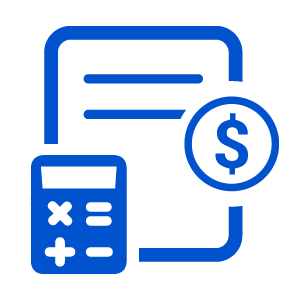




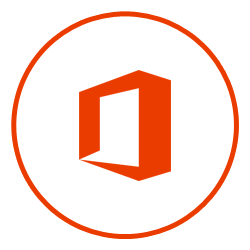


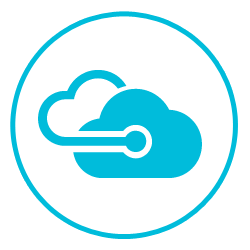

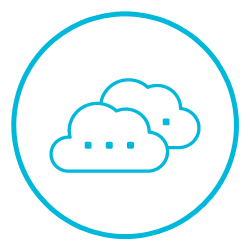

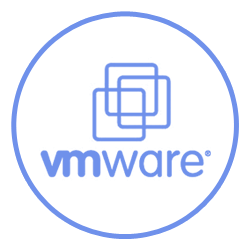
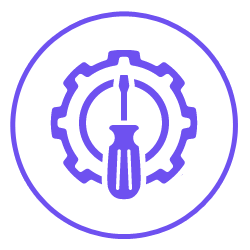








.png)



.png)
